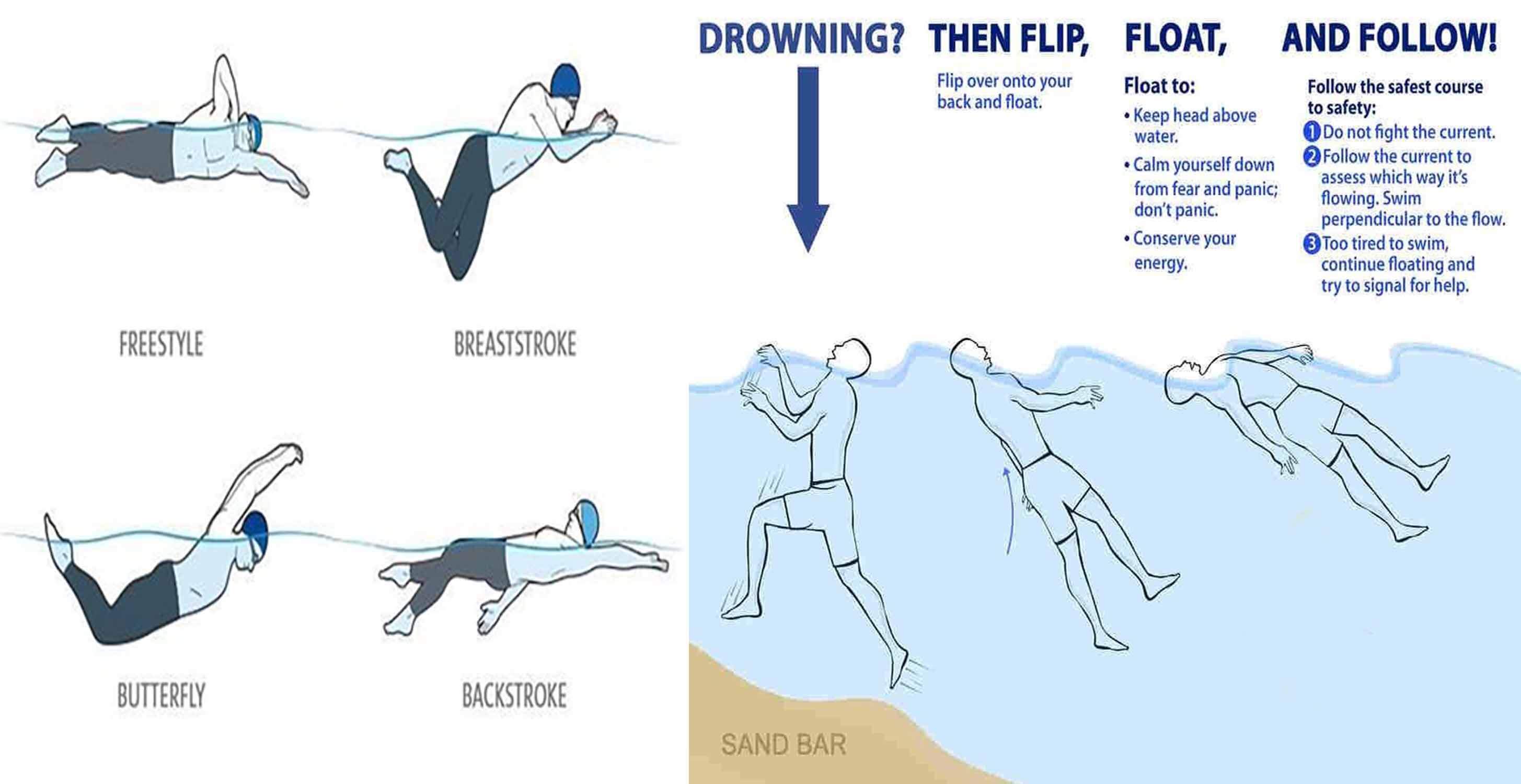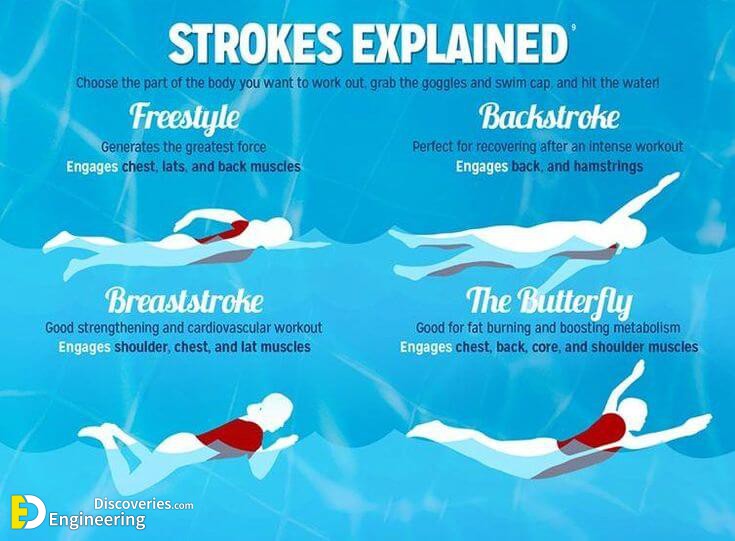If you are a novice, it is important to learn a few basic swimming techniques so you can feel safe in the water. If you master these basic techniques first, you will feel more at ease and relaxed when you tackle the popular swimming strokes. This article gives you an overview of those basic techniques.
1- Getting Comfortable in the Water
The first step for a novice is to be able to enter the water without being afraid and to be able to control breathing once being in the water.
2- Learning How To Float
If you can’t swim, you might believe that in the water you would sink to the ground like a stone. However, this isn’t true. In fact, it is very easy to float in the water as long as your lungs are filled with air.
3- Learning the Flutter Kick
The flutter kick is a simple yet effective swimming technique where your legs exactly kind of a whipping motion. As a beginner, you should learn to do this technique in a prone and in a supine position. You’ll be then able to use the flutter kick to tread water and to swim dog paddle. Later on, you’ll use this technique while swimming backstroke and the freestyle stroke.
4- How to Do the Starfish Float
The starfish float is a basic swimming technique where you float on your back with arms and legs spread apart.
5- Learning the Breaststroke Kick
As a beginner, it is also important to know the breaststroke kick, even though it’s more difficult to learn than the flutter kick. Beginners can use the breaststroke kick to tread water and to swim elementary backstroke. Obviously, the breaststroke kick is also used while swimming breaststroke.
6- Sculling Water
Sculling water is another basic swimming technique. Basically, you float in an upright position with your head above water and with your arms extended sideways at shoulder level. You use quick sweeping movements of your arms at the water surface to stay afloat. This technique is best used in combination with a kicking movement of the feet (see below).
7- Treading Water
Treading water allows you to stay afloat in the same spot while keeping your head above water and your body upright. It is a very useful technique when you need to orient yourself in the water or to observe something that happens around you on land.
Click Here To See Amazing Historical Places In The World To Add To Your Bucket List














